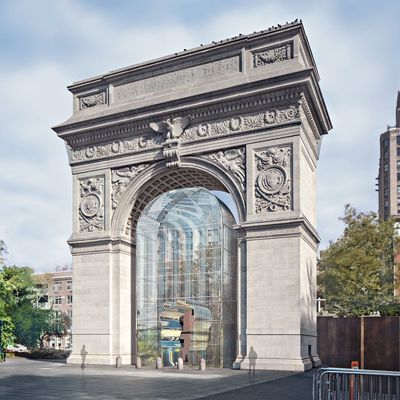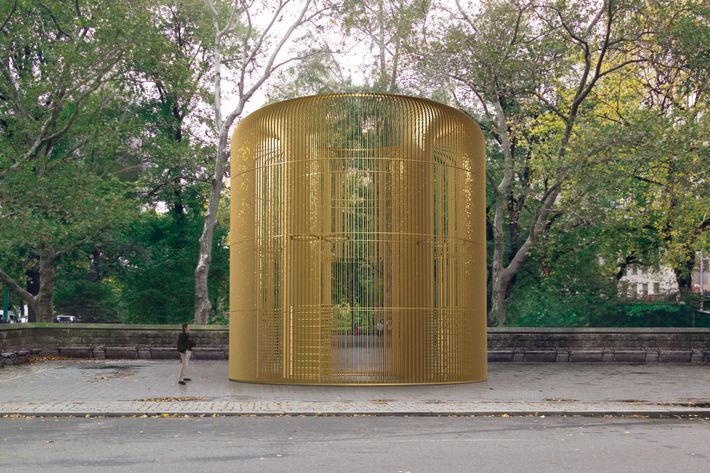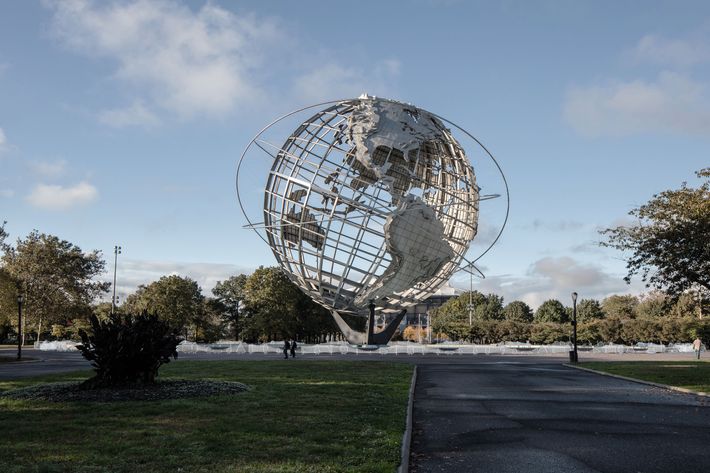
When Ai Weiwei was asked by the Public Art Fund about doing a citywide project, he was nervous. “I approached it very cautiously because it is a city I had once lived in and love,” he says. “It is like presenting yourself to an old lover; to give to the city what I never had a chance to achieve when I was there.” Come October, the project, “Good Fences Make Good Neighbors,” will, if all goes according to plan, be impossible to miss. As will, more than likely, its point, since the dissident Chinese artist has become openly concerned in his work with the rise of nationalism and the plight of migrant populations (the title is from the Robert Frost poem, “Mending Wall.”) But it’s also a homecoming of sorts for Weiwei, who lived in the East Village in the 1980s and for a while considered staying here. There will be large pieces — some quite large — riffing off the idea of a fence or barrier or border, in prominent places like nestled inside the Washington Square Park or as a low net-like (you can sit on it!) piece demarking the space around the Unisphere in Queens. His sponsor in this endeavor, the Public Art Fund, is celebrating its 40th year this year, and its director, Nicholas Baume, says: “I thought when we wanted to do something big for the 40th we also wanted to something which would be about New York City, really activate the city as a platform.” He first met with Weiwei in 2009 to discuss collaborating. But their plans were put on hold when the Chinese government put Weiwei under house arrest, and it wasn’t until he got his passport back and was able to set up his studio in Berlin that they were able to discuss a project further, in 2015.
After that, things moved relatively quickly for such an ambitious endeavor (17 larger pieces, many of which had to be fabricated in China, as well as hundreds of smaller interventions and signage). Its themes “come out of the travel and work he’s been doing on the migration crisis and the rise of nationalism and isolationism, and the sort of exponential increase in border fortifications since the fall of the Berlin Wall,” says Baume. “But he also wanted to do something which connected with a history of avant-garde activism in New York City: Gordon Matta-Clark cutting up the West Side Piers; Sol LeWitt, [Richard] Serra, [Donald] Judd,” and Weiwei’s idea of this city as a “democratizing place.” And hyperdemocratized: It took some careful politicking to get everybody onboard with it, from the city agencies down to the local communities. “I’m not sure how people will respond to it,” Baume says. Come October, we’ll find out. We spoke to Weiwei about this project and more.
Why do you like doing public art, what have you learned from doing it in the various locations you have?
I’m interested in placing art in a wider context, which can relate with people who might not necessarily have an arts background or even an interest in art. By doing so, it’s a challenge for myself as well as for the public’s established aesthetic sensibilities. Public art has a clear obligation to benefit society, whether the work is critical or benign. Since the public is a complicated and diverse crowd, the art should offer a possibility for the mass audience to engage with at different levels or points of view.
I tried to accomplish this with my first — and perhaps most notable — effort during “Documenta 12” in 2007. The work, Fairytale, was an effort to organize the travel of 1,001 Chinese citizens to Kassel to participate in the art event. The participants came from all over China — from diverse backgrounds — and was organized through the internet. That effort became the largest public artwork.
In 2014, I organized an exhibition on Alcatraz Island, a former federal prison in the San Francisco Bay. That exhibition received over 900,000 visitors. Last year, I had an exhibition at Le Bon Marché, a luxury department store in Paris. These different venues offered a lot of freedom and the results were surprising.
Why is it important now?
Public art has become increasingly relevant because of globalization and the internet. Technological advances have allowed people to become more connected. To have an understanding of a work which publicly serves all becomes more relevant.

When you were first approached by Nicholas Baume at the Public Art Fund, did you have some preexisting idea going into the conversation of a project or projects you’d always wanted to do in New York City?
We had discussed doing a project with Nicholas and the Public Art Fund for quite a while. I always hesitated. With regard to this project for New York City, I approached it very cautiously, because it is a city I had once lived in and love. It is like presenting yourself to an old lover; to give to the city what I never had a chance to achieve when I was there. At the same time, it becomes more challenging because my art, on a conceptual level, is always related to my current concerns. Whenever I begin a new project, I try to remain open-minded. It was not until the last moments that we decided what we were going to do.
What was that conversation like with Nicholas Baume? How did you get to this idea?
At the beginning, Nicholas discussed some traditional locations in New York City for public art. Early on, I knew that I would rather make something that would become a part of the city. We considered the total environment and how people use the city. This work engages with the city both architecturally and historically. New York is an immigrant city and consistent with the migration and refugee issues I have focused on during the past two years, including my upcoming documentary feature Human Flow.
How has it evolved?
We were never satisfied. We had several possible concepts, but it was never as proper as this one. With this one, we are completely settled and have made a strong effort.
Where did the name come from, and when did it come to you?
The name came about quite casually. Robert Frost, the American poet, has a poem titled “Mending Wall” containing the line, “Good fences make good neighbors.” I thought it would make a humorous title. Today, fences and walls in relation to geopolitics and the human condition is a very broad issue. To use this line from the poem has a bit of an ironic meaning.
Tell me about the locations. Why are they important?
New York City is the most important cosmopolitan center. It is so energetic and powerful because of its population’s diverse backgrounds — ethnically, culturally, and economically. To have a city at such a level requires many interesting minds and practices. It is the most challenging location for an artist.
We tried to include all the boroughs. Places of focus include the Lower East Side in Manhattan, Brooklyn, and Queens, which are areas that have a history of immigration and where many immigrants still live. In the ’80s, I spent almost ten years living in the Lower East Side.

Can you think back when you lived in NYC, what would you have thought of, experiencing something like this?
It may have been in a dream, but I would never think it could be reality. Even today, when I walk in the city, when you see the people, the masses, the 99.9 percent, they are so desperate. I was one of them. It is impossible to cope with this — like being in a rapidly flowing river and you have no time to stop, or no way to stop. Thankfully, I had a chance to be away from the city for the last two decades and now have the opportunity to come back. That gives me the energy to confront the big city.
Can public art make a difference, and if so, what would you describe as your goal in making this project?
I think public art is in the public domain. It belongs to the people who use the city’s facilities. It is open to discussion and to the public’s concerns. It will be successful for public art in an open society to generate that discourse and it can make a difference on an aesthetic, moral, and philosophical level.
*A version of this article appears in the August 21, 2017, issue of New York Magazine.





